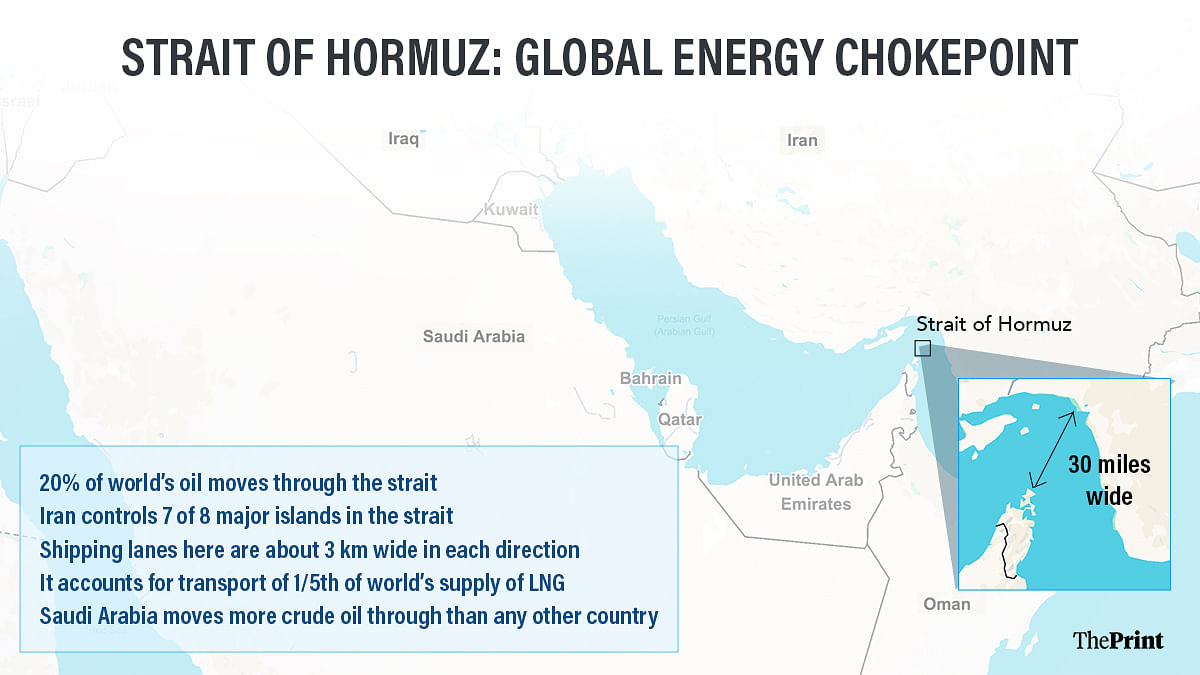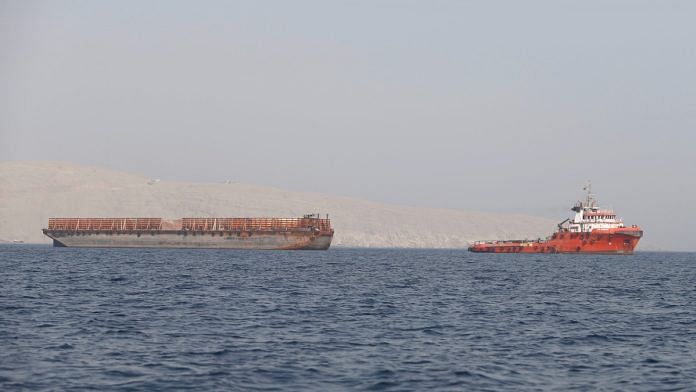New Delhi: Fears over the possibility of Tehran shutting down the Strait of Hormuz and disrupting the global oil trade rose Sunday after the US entered Israel’s war against Iran, striking three key nuclear facilities in an early morning attack.
Senior leaders and ultraconservative hawks in Iran pushed for the narrow sea passage to be shut down in retaliation to the attack. Roughly 20 percent of the world’s oil flows through the strait.
Hossein Shariatmadari, a close confidante to Iran’s Supreme Leader Ayatollah Khamenei and the managing editor of Kahyan, a conservative newspaper, has called for the strait to be closed to French, British, German and American ships, and for a military strike at the US naval fleet located in Bahrain, according to reports.
While the strait has never been closed in the past, there has also never been a situation where both Israel and the US have directly attacked Iranian nuclear installations. The US early Sunday (IST) launched a military strike at three Iranian nuclear installations—Fordow, Natanz and Isfahan. The US used B-2 bombers to drop bunker bombers on Fordow, regarded as Iran’s most fortified uranium enrichment plant.
“Not only were Iran’s peaceful nuclear facilities attacked, but the United Nations Charter, international treaties, and the very principle of the rule of law were also assaulted and disregarded,” Seyed Abbas Araghchi, the Iranian foreign minister said at a press briefing in Istanbul, Turkey.
Araghchi added: “We are currently assessing the scale and scope of the damages. As I mentioned earlier, the damage is not limited to Iran’s nuclear facilities alone.”
When asked about the scope of Iranian retaliation and it could include the closure of the Strait of Hormuz, Araghchi declined to elaborate, but said, “There are a variety of options available to us.”
Accounts for transport of one fifth of global LPG supply
About 161 km in length and 33 km wide at its narrowest point, the Strait of Hormuz is a critical maritime lane, connecting the Persian Gulf with the Arabian Sea. The strait is one of the most important energy chokepoints in the world, with roughly 20 million barrels of oil flowing through it per day in 2024, according to the US Energy Information Administration.
This accounts for roughly 20 percent of the total consumption of petroleum liquids globally. The strait runs between Oman in the South and Iran in the North. The shipping lanes are roughly 3 km wide in either direction.

Petrostates in West Asia, Iraq, Kuwait, Bahrain, Qatar, the United Arab Emirates and Saudi Arabia, in addition to Iran, all rely heavily on the sea-borne passage for carrying crude oil abroad. For most of the countries in the region, there are few alternative routes. The strait also accounts for the transport of a fifth of the world’s supply of liquefied natural gas (LNG), mostly from Qatar, according to Bloomberg.
Still, the Bloomberg reports, Saudi Arabia has access to the Red Sea through a pipeline that would allow it to export its crude by avoiding the Strait of Hormuz. The UAE also can export some of its crude without requiring the ships to pass through the Strait of Hormuz, due to a pipeline to the port of Fujairah on the Gulf of Oman.
However, for Iraq, all of whose oil exports are shipped by sea from the port of Basra, passing through the strait, Kuwait, Qatar and Bahrain, the Strait of Hormuz is a key passage. According to reports, most of the oil flowing through it is destined for other countries in Asia, in particular China.
Any disruption to the free passage of maritime ships through the Strait could see oil prices spike to over $100 a barrel, according to reports, thereby potentially leading to inflation across the global economy
Closing the Strait of Hormuz could be considered a contravention of international law. Short of shutting it down, Iran could also lay mines within the passage or attack ships with smaller patrol boats, or loitering munitions.
The closest precedent to a conflict in the strait would be the so-called tanker war during the Iran-Iraq war in 1980s, when Iraq and Iran attacked merchant vessels in the strait.
The attacks in the strait were part of Iraq’s broader attempt to hurt Iran economically, with Tehran having destroyed Iraq’s port early on in the war, preventing Baghdad from exporting its oil by sea. By 1987, at least 451 ships had been attacked by Tehran and Baghdad in the Strait of Hormuz, pushing up insurance prices. Even so, the strait was not shut down.
The Houthis have been disrupting shipping through the Red Sea by using loitering munitions as part of their efforts to end the war in Gaza. In December 2023, the Houthis had successfully targeted India-bound oil tankers through loitering munitions, causing structural damages to the ships.
Iran, which has a large capacity of missiles and loitering munitions, would be more capable of disrupting the trade through the Strait of Hormuz. However, the US maintains its Fifth Fleet in Bahrain, which could further disrupt any Iranian attempts at the closure of the Strait.
(Edited by Sanya Mathur)
Also Read: Why Fordow, Natanz & Isfahan facilities struck by US are critical to Iran’s nuclear ambitions







“ultraconservative hawks” … Nice to see another unbiased piece.